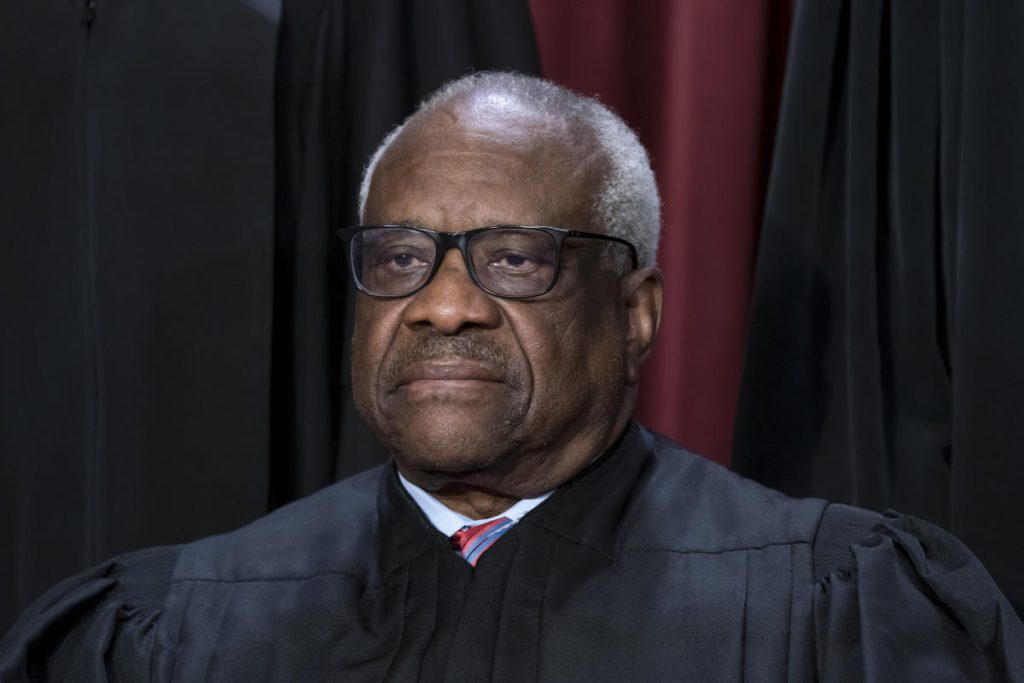Supreme Court Justice Clarence Thomas was notably absent from the court on a particular day, with Chief Justice John Roberts announcing his absence without providing an explanation. Thomas, who is 75 years old, did not participate remotely in the day’s arguments, which justices sometimes do when they are unable to be present in person. Despite his absence, it was indicated that Thomas would still participate in the day’s cases based on the briefs and transcripts of the arguments. The court typically does not always disclose when a justice is unable to attend due to illness.
This is not the first time that Thomas has been absent from the court, as he was hospitalized two years ago with an infection that caused him to miss several court sessions. Even during that time, Thomas still participated in the cases, showcasing his commitment to his duties as a Supreme Court justice. As the longest-serving current justice, having been appointed in 1991, Thomas has a strong track record of adjudicating cases and contributing to important legal decisions.
The absence of a Supreme Court justice, especially one as experienced as Clarence Thomas, can have significant implications for the court’s operations. With the court’s decisions affecting the legal landscape of the United States, any absence can impact the outcome of cases and how they are decided. Despite Thomas’ absence on this particular day, the court must continue to function and uphold its responsibilities in interpreting and applying the law.
The Supreme Court plays a crucial role in the U.S. legal system, with its decisions shaping the course of American jurisprudence. Justices like Clarence Thomas bring years of experience and expertise to their roles, influencing the direction of the court and its decisions. Thomas’ absence serves as a reminder of the importance of having a full bench of justices to ensure the effective functioning of the court and the delivery of justice to the American people.
As one of the most visible and influential branches of the U.S. government, the Supreme Court continually faces scrutiny and attention from the public and the media. Justices like Clarence Thomas are often the subject of debate and discussion, with their decisions and opinions having far-reaching consequences for society. Thomas’ absence highlights the human element of the court, reminding us that even high-ranking officials are not immune to illness or other personal challenges.
In conclusion, Justice Clarence Thomas’ absence from the Supreme Court on a particular day raises questions and speculation about his health and well-being. As one of the longest-serving current justices, Thomas’s presence is crucial to the court’s operations and decision-making. Despite his absence, the court must continue its work and fulfill its duties to uphold the rule of law and deliver justice to the American people. Thomas’ absence serves as a reminder of the human element within the court and the importance of having a full complement of justices to ensure the effective functioning of one of the most important institutions in the U.S. governmental system.


